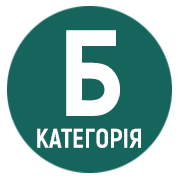Artistic translation as the implementation variably-interpretive potential of the translator
DOI:
https://doi.org/10.31494/2412-933Х-2018-1-6-158-166Keywords:
translation, cognitive linguistics, plurality, variability, intercultural communication, linguistic unit.Abstract
The article examines the question about multiplicity in the Russian-Ukrainian translations of classical literary texts, causes this multiplicity. A look at the translation as an activity necessary for communication made it possible to positively solve the problem translation ambiguity. The process of mental actions subject cognitive translation is covered: the perception of the original work, awareness, understanding, further translation. The subjective-objective activity of an interpreter as an intermediary in bilingual communication is the factor of the plurality translations, the which degree depends on the text’s genre, its temporal and spatial characteristics, the development translation tradition and the receptive capabilities in the target language and culture. The notion of plurality is an attribute on artistic translation, connected with the personality’s concept, competition of talents. The author also quotes R. Tchaikovsky as for the opinion that the multivariance of the artistic text and the strategies addressed by the translators are of great importance. The transformation Pushkin's works is analyzed under the conditions variability translations as the main indicator of the reception a particular author in a foreign culture. Possible difficulties and inaccuracies that arise in the translation are considered differences in interpretation of the understanding the original contents. The content units in classical works are determined, which translation is difficult because exist historical development of language, current state. Is analyzed a lexical transformations and grammatical transformations carried out by the translator as a cognitive subject. The subjective-objective activity of an interpreter as an intermediary in bilingual communication exists as a factor translations plurality, the degree of which depends on the text genre, temporal and spatial characteristics, the translation tradition development and the receptive capabilities target language and culture.
References
Голоцукова Ю. О. Роль історизмів у романі В. Малика "Таємний посол" / Ю. О. Голоцукова // Науковий вісник Херсонського державного університету. – Херсон : ВД "Гельветика", 2018. – Вип. 2. – С. 201–206.
Монахова Т. В. Методи когнітивної лінгвістики в дослідженні концептів // Новітня філологія. / ред. А. М. Науменко. – Миколаїв : ЧДУ ім. Петра Могили, 2010. – Вип. 37. – С. 25–34.
Науменко А. М. Складові індивідуального стилю перекладача / А. М. Науменко // Новітня філологія. – Миколаїв : Вид-во ЧДУ ім. Петра Могили, 2009. – № 13 (33). – С. 141–152.
Олександр Пушкін. Полтава / Вольний пєрєвод на малоросійський язик: Євген Гребінка. – СПб : В тіпографії І. Вороб'йьова, 1836. – 74 с.
Попова З. Д., Стернин И. А. Когнитивная лингвистика / З. Д. Попова, И. А. Стернин – М. : АСТ : Восток – Запад, 2007. – 314 с.
Пушкин А. С. Собрание сочинений в 10 томах. Т. 5. Романы, повести / Д. Д. Благой, С. М. Бонди. – М. : ГИХЛ, 1959-1962. – . – Т. 3. – 217 с. – Т. 5. – 658 с.
Пушкін О. С. Твори в чотирьох томах / Пер. за ред. М. Т. Рильського. – К. : Державне видавництво художньої літератури, 1952-1954. – . – Т. 2. – 412 с. – Т. 4. – 576 с.
Романовская Н. В. Когнитивная и языковая способность как детерминанта перевода: экспериментальное исследование / Н. В. Романовская. – М. : Изд-во МГТУ ГА, 2003. – 216 с.
Сікач Л. М. Національно-культурний компонент – майстерність перекладу / Л. М. Сікач // Мова і культура. – 2009. – т. 6 (118), Вип. 11. – С. 231–235.
Чайковский Р. Р. Основы художественного перевода: вводная часть / Р. Р. Чайковский. – Магадан : Изд. СВГУ, 2008. – 182 c.






